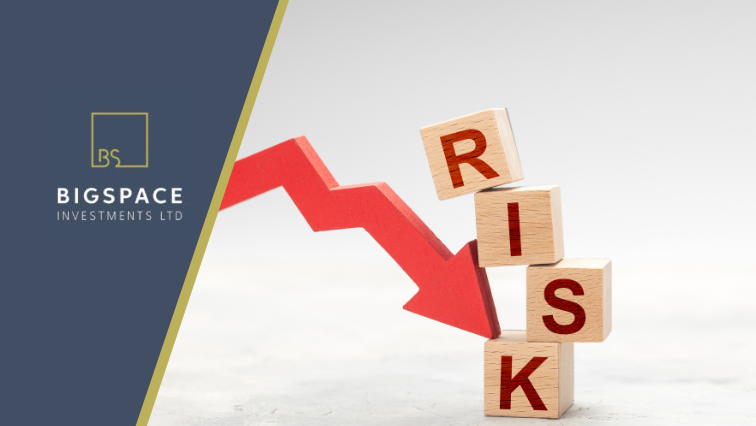Introduction
Not all industries move in the same direction. While some sectors are on the rise, others face mounting regulatory challenges, economic uncertainty, or changing consumer trends that could slow growth or create risks for investors and startups.
As we move into 2025, founders and investors need to be strategic about where they allocate resources. Some industries that once seemed unstoppable may now pose greater risks than rewards. In this blog, we’ll explore five sectors that warrant caution, highlighting potential pitfalls and key warning signs to watch.
1. Crypto & Web3: The Regulatory Uncertainty Continues
For years, crypto and Web3 startups attracted billions in funding, but a combination of market crashes, fraud cases, and regulatory scrutiny has dampened investor enthusiasm.
Why It’s Risky in 2025:
⚖️ Regulatory Crackdowns: Governments worldwide are introducing stricter crypto regulations, making compliance a moving target.
📉 Market Volatility: Bitcoin and altcoins remain unpredictable, making it difficult to forecast long-term growth.
🚨 Fraud & Security Issues: Hacks, rug pulls, and scams continue to shake investor confidence.
What to Watch For:
🔹 If new regulations clarify compliance requirements, some parts of the crypto sector may regain traction.
🔹 Layer 2 scaling solutions and blockchain applications with real-world use cases (like payments and supply chain transparency) may have better survival chances.
💡 Verdict: Be cautious—crypto will remain volatile, and regulatory decisions could make or break the sector.
2. Buy Now, Pay Later (BNPL): A Debt Bubble Ready to Burst?
The Buy Now, Pay Later (BNPL) industry exploded in popularity, allowing consumers to split payments into interest-free installments. However, rising debt concerns and regulatory scrutiny are making BNPL a high-risk sector.
Why It’s Risky in 2025:
💳 Consumer Debt Crisis: Many BNPL users are accumulating unsustainable debt, leading to high default rates.
📊 Profitability Challenges: Despite high adoption, many BNPL companies struggle to turn a profit due to thin margins and rising default risks.
🛑 Regulatory Pressure: Governments are tightening consumer lending rules, making it harder for BNPL firms to operate freely.
What to Watch For:
🔹 If BNPL companies shift toward credit-scoring models and better risk management, they may survive.
🔹 Partnerships with regulated financial institutions could improve BNPL’s legitimacy.
💡 Verdict: High risk—unless BNPL providers improve risk assessment, stricter regulations could slow growth.
3. The Gig Economy: A Regulatory Headache in the Making
The gig economy—driven by platforms like Uber, Deliveroo, and Fiverr—has provided flexible income for millions. However, legal battles over worker rights and economic instability are creating serious risks.
Why It’s Risky in 2025:
⚖️ Worker Classification Laws: Governments are cracking down on companies treating workers as independent contractors instead of employees.
💰 Rising Operational Costs: Companies may struggle to remain profitable if they are forced to offer benefits and minimum wages.
🚨 Saturation & Competition: The market is flooded with gig platforms, and differentiation is becoming harder.
What to Watch For:
🔹 If companies adapt by offering hybrid employment models, they may stay ahead of regulations.
🔹 Automation and AI could replace many gig jobs, further complicating the industry’s future.
💡 Verdict: Uncertain future—regulatory risks and automation could disrupt this sector.
4. Traditional Media & Advertising: The Decline of Legacy Models
TV networks, print media, and traditional advertising channels have been losing relevance for years as digital and social media take over. In 2025, this trend will only accelerate.
Why It’s Risky in 2025:
📉 Declining Ad Revenue: Consumers are moving away from traditional TV and print, leading to reduced ad spending.
📱 Rise of Ad-Free Platforms: Subscription services and ad blockers are cutting into media companies’ revenues.
🤖 AI-Generated Content: AI tools are disrupting the media landscape, producing content at a fraction of the cost.
What to Watch For:
🔹 Companies that adapt to digital-first strategies and invest in AI-driven content may survive.
🔹 The creator economy (YouTube, Substack, Patreon) is pulling revenue away from legacy media.
💡 Verdict: Media is evolving, not dying, but traditional players must innovate or face decline.
5. Electric Vehicle (EV) Startups: A Market Correction Is Coming
The EV industry has been one of the most hyped sectors in recent years, with new startups flooding the market. However, increasing competition, supply chain issues, and slowing consumer demand suggest the industry may face turbulence in 2025.
Why It’s Risky in 2025:
🔋 Battery Supply Chain Constraints: Critical materials (lithium, cobalt) are expensive and in limited supply.
📊 Market Saturation: Dozens of new EV companies are competing, but only a few will survive long-term.
⏳ Government Incentives Are Ending: Many countries are phasing out EV subsidies, which could slow adoption.
What to Watch For:
🔹 Established players like Tesla and legacy automakers have the resources to withstand market pressures.
🔹 Battery innovations (solid-state, sodium-ion) could reduce costs and keep the industry competitive.
💡 Verdict: Only the strongest EV startups will survive—investors should be selective about which companies have scalable technology and supply chain control.
Conclusion: Proceed with Caution, But Don’t Ignore Innovation
While these industries face significant risks in 2025, it doesn’t mean they are doomed. Sectors that evolve, adapt, and address their challenges head-on may still present valuable opportunities.
📌 Crypto & Web3 need regulatory clarity before regaining momentum.
📌 BNPL must address its debt crisis and regulatory concerns.
📌 The gig economy will need to adapt to new labor laws.
📌 Traditional media must embrace AI, digital platforms, and new revenue models.
📌 EV startups need strong supply chains and unique differentiation to thrive.
For investors and entrepreneurs, the key is recognizing risk early and identifying which companies are prepared to navigate the challenges ahead. 2025 will be a make-or-break year for many of these sectors. 🚀
